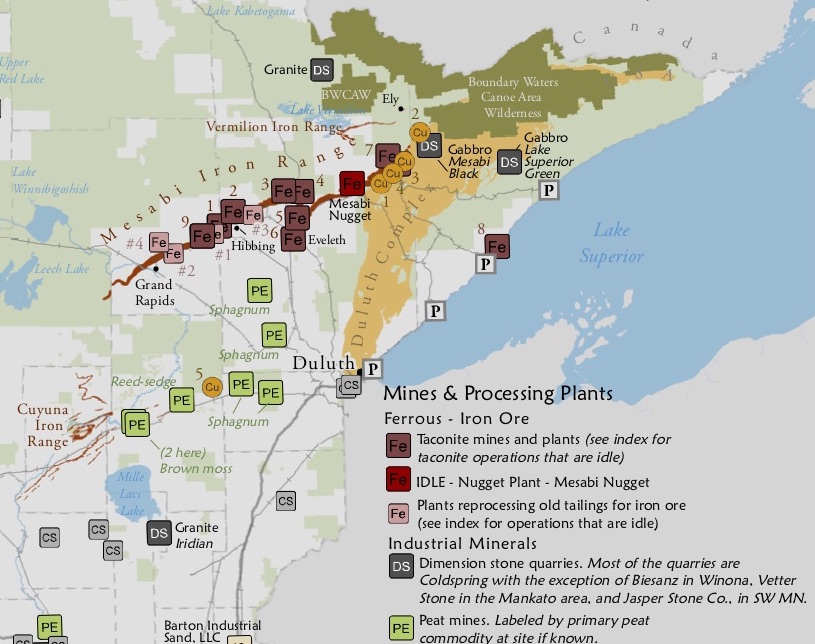Other Mines
The Myth of Rigorous Regulation at Existing Mines
When WaterLegacy began working to prevent pollution from the proposed PolyMet sulfide mine, we were often told that if copper-nickel mining had to be done somewhere, it should be done in Minnesota, due to the state’s allegedly tough regulatory standards.
But, Minnesota’s “rigorous regulation” is a myth. When WaterLegacy and citizen scientists looked into water pollution permits for existing taconite and peat mines, it was clear that the Minnesota Pollution Control Agency (MPCA) was not enforcing water quality standards to limit mercury, sulfate, and other toxic pollutants. WaterLegacy has advocated in permitting processes and in court to require both the MPCA and the U.S. Environmental Protection Agency (EPA) to control pollution at resulting from existing ferrous (iron and taconite) and peat mining projects.
Potential Sulfide Mining
The Twin Metals (Antofagasta) mine has been proposed near the Boundary Waters and the Kennecott (Rio Tinto)/Talon mine is in an advanced exploration stage in the St. Croix and Mississippi watersheds. In addition, sulfide mineral exploration in many areas of northern Minnesota has threatened individual property rights as well as the quality of natural resources.

